Search results for “delaware river basin”
The role of the National Leadership Council (NLC) and its rules for functioning are detailed in Article IV. of the TU bylaws and in this comprehensive NLC Representative Manual. The NLC is the volunteer body that sets the direction of TU and is made up of one representative elected from each state of TU’s 36 councils.

Students from the Salisbury Central School (4th-8th grade) and Sharon Center School (1st – 8th grade) recently participated in a tree-planting event on Salmon Creek at Lime Rock Park in Northwest Connecticut. The event is part of an ongoing restoration initiative on the creek, a tributary to the Housatonic River. The work is helping to
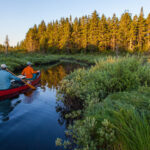
Take action to #SaveLWCF By David Kinney and Taylor Ridderbusch In 2016, sportsmen and women in Maine celebrated the successful end of a seven-year project to preserve an 8,159-acre parcel known as Cold Stream Forest (above). It was a step that protected a 14-mile native brook trout stream and seven ponds. “Cold Stream is one
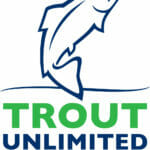
WSA_Logo_v2_cropped.jpg tu-logo-xl.jpg FOR IMMEDIATE RELEASE April 12, 2018 Contact: Rob Masonis, VP for Western Conservation, Trout Unlimited, rmasonis@tu.org, 206-491-9016 Nick Chambers, Wild Steelhead Initiative Organizer, nchambers@tu.org, 541-908-1329 Trout Unlimited and Wild Steelheaders United applaud decision to re-open Skagit River wild steelhead fishery, call for additional analysis of fishery impact limits to ensure consistency with recovery
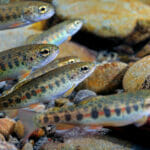
“It is our collective opinion, based on overwhelming scientific evidence, that restoration of a free-flowing lower Snake River is essential to recovering wild Pacific salmon and steelhead in the basin.” So reads a remarkable letter recently sent to the governors of Oregon, Washington, Idaho and Montana by 10 of the finest and most-respected salmon and steelhead scientists in
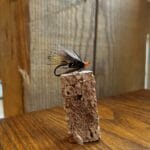
If you were to look in the box of a seasoned steelheader on the banks of the Snake, Grande Ronde or Clearwater chances are good you’ll find.
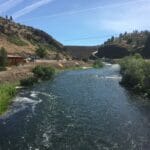
P R E S S R E L E A S E Karuk Tribe ● Yurok Tribe ● Pacific Coast Federation of Fishermen’s Associations ● Trout Unlimited ● California Trout ● Sustainable Northwest ● American Rivers ● Save California Salmon ● Klamath Riverkeeper For Immediate Release: July 16, 2020 For more information: Craig Tucker,
Our scientific work on the biology, behavior, and ecology of steelhead and rainbow trout focuses strongly on mechanisms influencing life histories, or the strategies these fish use – such as anadromy and residency – to make best use of their environment. As one example John McMillan, Trout Unlimited’s Science Director for the Wild Steelhead Initiative,
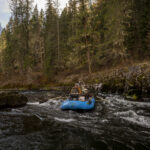
Some things just disappear. The rod tube cradling my beloved Winston 5-weight somehow took wing and soared out of my backpack and landed on a county road. Knives have evaporated from my pockets and have never reappeared. Sunglasses vanish like Jimmy Hoffa, never to be seen again. All this is mostly just an annoyance if

Iron Gate dam, one of the four dams slated for removal under the Klamath Hydropower Settlement Agreement and the KRRC plan. On June 28, the Klamath River Renewal Corporation submitted a major filing with the Federal Energy Regulatory Commission regarding the KRRC’s “ Definite Plan” for removing four old hydropower dams on the Klamath River.

On April 7, the long effort to restore the Klamath River and its once-prolific salmon and steelhead runs passed another major milestone when the California State Water Resources Control Board (SWRCB) issued its Clean Water Act Section 401 water quality certification for the removal of the Lower Klamath Project. The Lower Klamath Project includes the
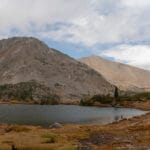
New leadership and investments in people reflect growing federal partnerships and project funding across the region.
New leadership and investments in people reflect growing federal partnerships and project funding across region Contact: DENVER – Today, Trout Unlimited (TU) announced a series of new investments in its people to accommodate the growing number of innovative partnerships across the Rocky Mountains. Over the last decade, TU has secured roughly $133 million in funding partnerships to
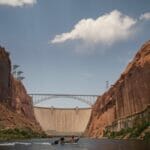
We just released an issue of TROUT magazine that focuses most of its 100 pages on the need to remove four dams from the Lower Snake River. That was an easy call for me as editor because I think removal of the Lower Snake dams, thus giving a huge percentage of steelhead and salmon in the
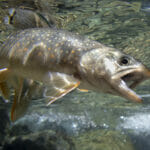
A volunteer chapter in Washington State is going the distance to collect trout and salmon eDNA samples in their home water
The data show conclusively that the Pacific Northwest’s climate is warming. The Snake River basin will experience hotter temperatures in the summer, which will make water conditions in the lower Snake River more problematic than they are at present. High water temperatures in the Snake under current conditions can take a devastating toll. In 2015,
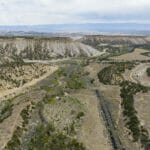
Agreement will support process-based restoration in Colorado River, California-Great Basin, and Columbia Pacific Northwest watersheds Contacts: Arlington, Va.—The Bureau of Land Management (BLM) and Trout Unlimited (TU) today announced a five-year, $8.9 million agreement to reconnect and restore arid Western watersheds, including the Colorado River, California-Great Basin, and Columbia Pacific Northwest river systems. TU will
TROUT UNLIMITED PRESS RELEASE FOR IMMEDIATE RELEASE: Feb. 12, 2016 Contact: Steve Moyer: (703) 284-9406, smoyer@tu.org, (TU National) Randy Scholfield, (720) 375-3961, TU communications, rscholfield@tu.org Trout streams to benefit from RCPP grants WASHINGTON, D.C. Trout streams from Minnesota, Wisconsin and New Hampshire to Oregon and Idaho are about to get a big boost thanks to

Long-awaited report shows that replacing the dams’ benefits is possible. Change in the Snake basin is inevitable.
The short answer is no. Rebuilding salmon and steelhead populations will require increasing the number of adults that return to spawn relative to the number of juveniles that migrate to the ocean. This is known as the smolt-to-adult ratio, or SAR. However, in the past 25 years, salmon and steelhead SARs have failed to reach 2















